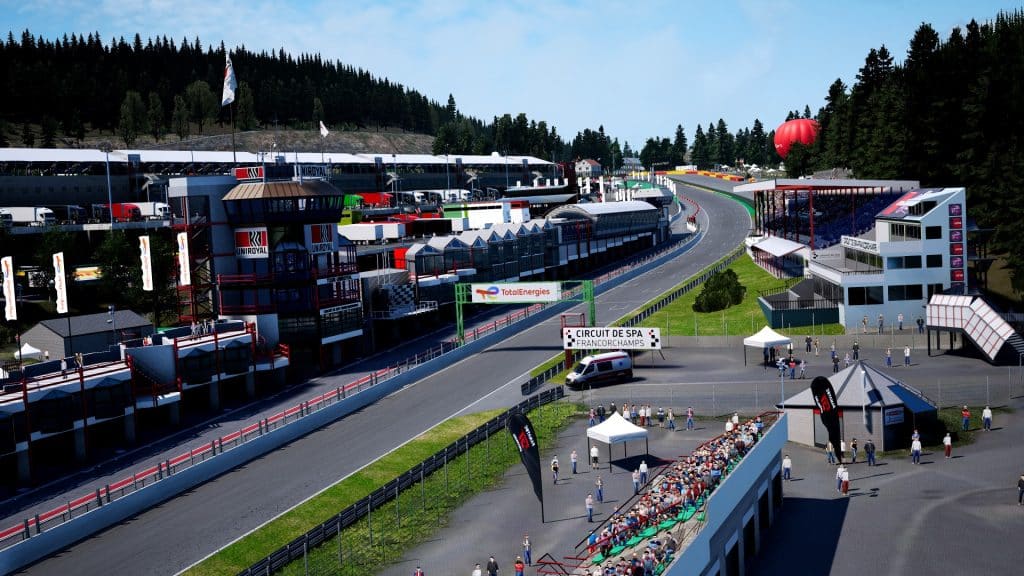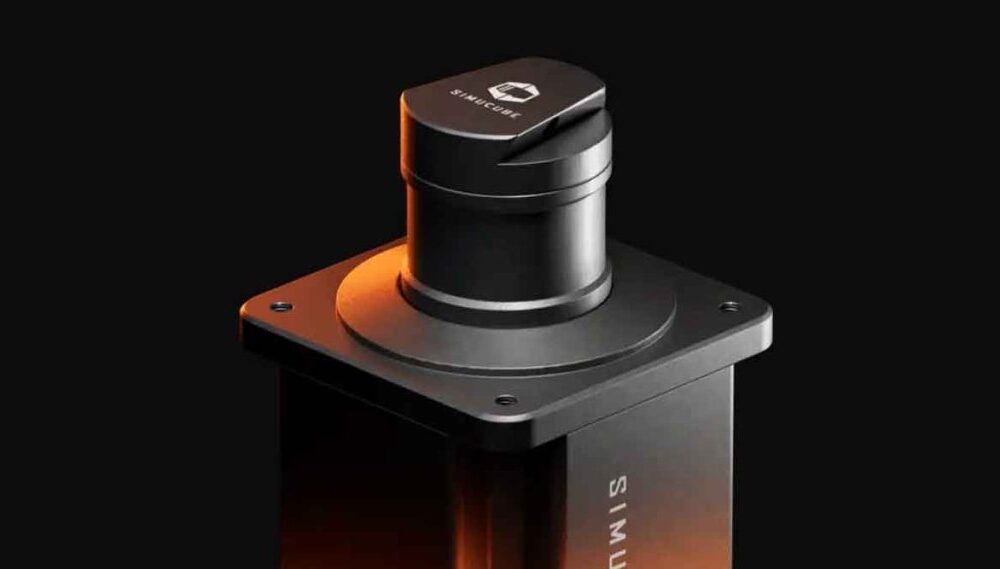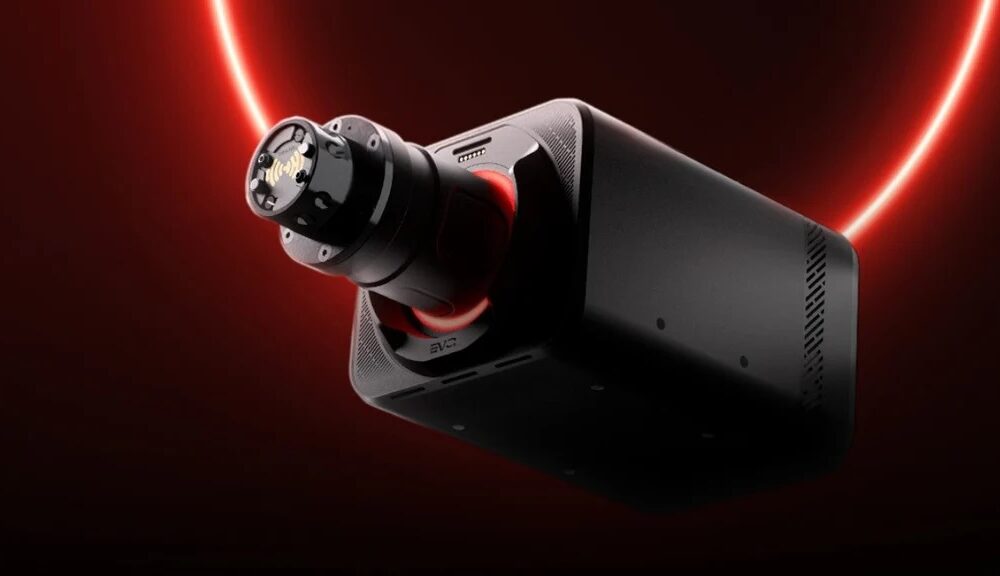Spa-Francorchamps has a rich history in Formula 1 and GT racing, and is widely regarded as one of the most challenging tracks in the world.
Before we walk you through the iconic Belgian circuit, here are some nice-to-know facts:
- The circuit was first used for motorsport in 1922 and has since undergone numerous modifications and improvements
- The track has hosted the Belgian Grand Prix for over 60 years and is considered one of the classic Formula 1 venues. Notable winners include Michael Schumacher, Ayrton Senna, and Jim Clark
- The track measures 7.004 kilometres in length
- 19 corners (nine left-hand corners and ten right-hand corners)
- The elevation difference from the highest to lowest points of the track is 102.2m
- Hosts GT3 endurance races and the most popular event is the 24 hours of Spa
This track guide will focus on giving you a comprehensive understanding of this legendary circuit and its technical corners. We’ll be showing you racing lines, braking points, how to choose your apex, when to get on the throttle, and finally, how to use your vision to maximize your exits and avoid off-tracks.
Turn 1 (La Source)
Turn 1 is a right-hand hairpin with a slight uphill approach that encourages you to push the braking zone.
Entering La Source, position your car to the far left of the track to open up the entry point. Look as far ahead as you can to spot your braking point which is around the 100-metre board on the left-hand side. It is a hard braking zone which requires maximum time spent in a straight line before turning in. A missed timed downshift could cause rear instability while heading for the apex – something that often catches drivers out.

La Source is a first or second-gear corner, depending on the car you are driving.
Once you have entered the braking phase, your focus should then be on your turning-in point and the apex. Aim the car so that it cuts all of the inside curbing and remember it is a late apex so turn in later than you think while progressively introducing steering input.
This corner is all about slow in and fast out. Getting on the power as early as you can is of paramount importance with the long flat-out Eau Rouge and Kemmel straight section directly following. Beware of track limits on the exit as there is an elevated sausage curb that runs alongside the astroturf which can unsettle the car and invalidate your lap.
Turn 2, 3 and 4 (Eau Rouge and Raidillon)
Turns 2, 3 and 4 are collectively known as Eau Rouge and Raidillon, and are two of the most famous corners in motorsport. Eau Rouge is the left-hand entry that leads directly into Raidillon – the scene of most accidents due to its challenging blind crest and high speed.
Approaching Eau Rouge, keep the car to the right-hand side and stay close to the pit wall. This section is all about carrying speed and not scrubbing off momentum by turning too much.
Keep that focus as far ahead as possible so that you can anticipate your next move.
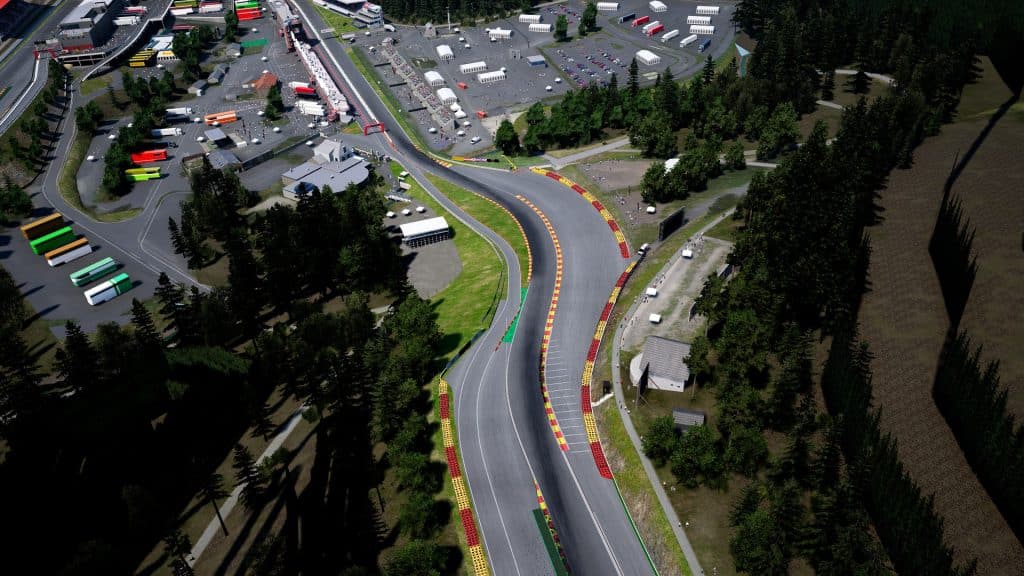
As you run down the hill, look to cut the left-hand entry curb and get the car prepared for the uphill section which immediately follows. Using this as much as possible opens up your entry to the following right-hander, which requires a relatively late apex. Don’t use too much inside curb on the right-hander, rather aim to just kiss it, because the car can easily get unloaded as it goes from hard compression to lift.
If you get the initial entry point correct, you should be able to maintain full throttle and your trajectory will naturally keep the car settled.
The next part is completely blind as you come over the crest. It takes full commitment and you can once again cut the inside curb. As long as you keep 2 wheels inside the solid white line your lap will not be invalidated.
During the direction change, keep your steering as straight as possible to maintain momentum and stability for the best possible speed down the Kemmel Straight. You can also use the exit curb on the right-hand side quite generously if you need extra space to keep your car stable.
Turn 5, 6 and 7 (Les Combes)
Les Combes is a medium-speed sequence of corners, which requires a lot of commitment and precision from the driver, especially in a GT3 car where exact curb usage is vital.
The racing line for Les Combes involves hugging the left-hand side of the track as you approach the first corner in the sequence. It requires heavy braking at around the 100-metre brake board. From sixth gear, downshift down to third or second depending, on your car and its length of gears. Release the brake earlier than you think, and carry speed into the first apex where your aim is to climb all over the entry curb. However, do not keep your car on to the right for too long, as the left-hand part directly following is much more important.

To keep the car stable during a heavy direction change and weight transfer in Turn 6, aim to cut the inside curb and get slightly onto the run-off of the left-hander with your inside wheels. You’ll find it naturally helps rotate the car once you hook your tyres into that inside curb. It requires a slight lift to raise the nose to avoid any unnecessary interaction with the curb. Don’t open the steering too much as you want to stay more to the left for the following right-hander.
Change up to third (if you are in second) before the last turn and get as far left as you can to open up the entry. Turn in early and carry the speed in, avoid using too much inside curb as it can unsettle the rear of the car. Get on the power progressively and as early as you can, and look to maximize the exit curbing to get the run down the short hill to Bruxelles.
To drive this sequence quickly in a GT3 car, precision and timing of inputs take precedence. You will be balancing the weight transfer of the car laterally delicately and so excessive steering angle can punish you very quickly.
Overall, Les Combes is a challenging and rewarding sequence of corners for GT3 drivers, and a good performance through this section can make a significant difference in lap times.
Turn 8 (Bruxelles formerly Rivage)
Bruxelles is a slow, long right-hand hairpin which can be challenging to navigate in a GT3 car given it is all about rolling speed and patience. There are various lines to take, but the quickest line in a GT car is to hang onto the brake on entry and hug the inside curb.
Heading down the hill, look for the curbing that starts on the left-hand side of the entry. This is your braking point reference. Brake as soon as the curbing starts and point the car towards the entry curb. Getting the car pointed towards the corner early is important as the inside wheel unloads very quickly as the camber of the road changes.

You then need to trail brake while downshifting down to first or second gear, and modulate the brake enough so that you minimize ABS activation whilst keeping your minimum speed up. Too much ABS interference will push the car out too wide.
As you pass the middle of the corner, try to avoid running the car out too wide. The faster you can get the front end to bite and get the car rotated, the faster you can aim for your exit point when you want to get back on the throttle. Avoid getting on the power too early and aggressively, however, as this will induce push exit understeer – a phenomenon more prevalent in certain cars in ACC such as the Porsche 992 GT3 R – and will cost you valuable time.
Turn 9 (No name)
No name is a medium to fast-speed downhill left-hander and possibly one of the most difficult corners on the track. It requires precision on entry to avoid unsettling the car and to maximize speed going down the following straight.

On entry keep, to the right-hand side and aim for a late apex coming off the curb. Some cars require a lift while others might require slight braking to get to the correct trajectory by tucking in the nose. Heading for the apex, keep your steering input constant and use the inside curb if your car doesn’t get unsettled by it. You should be getting on the power just before you reach the apex and you want to use the exit to maximize the drive. The exit curb can be used generously but watch out for off-tracks. You need to keep at least two wheels inside the white line.
Turn 9 is a basic corner on paper but there can be a lot of time to gain or lose through this section and any understeer will put you in the danger zone on the outside where you’ll start to flirt with track limits.
Turn 10 and 11 (Pouhon)
Pouhon is a high-speed, double left-hand corner, which requires a lot of commitment and an exact racing line due to the speed at which you take it. It is one of the few corners in motorsport where commitment is still king.
Stick to the right-hand side and use the entry curb as your braking reference. When you’ve reached approximately the halfway mark in the entry curb, start to brake and turn in at the same time. Use third or fourth gear depending on your car.
It’s essential to aim for a sweeping apex on the first part of the corner while also carrying the perfect speed on entry to set you up for the second apex later on. If you go in slow, you will have to accelerate too soon, ruining your flow into Turn 11, and if you go in too fast, you will run wide onto the slippery curb on the outside.

The midway point between the first and second apex is generally a good reference for where you must be on the throttle again. You want to ensure any understeer is eradicated mid-corner before committing to the second apex.
If the car is settled, immediately get back on the power and use the grip and downforce to pull you through the second apex and out on the exit curbing. Watch out for understeer if you are slightly off line though – you want to keep the steering smooth to keep the momentum up. A tip for this is to look ahead so your hands follow where your eyes are focused.
Turn 12 and 13 (Fagnes or Piff Paff)
Fagnes is a high-speed, sweeping chicane that requires a lot of precision. It’s easy to misjudge this sequence and it can cost you a lot of lap time if you get it wrong.
Stick to the left-hand side on entry and use the start of the curb as your braking reference. Trail brake and downshift to second or third gear.

The entry to the first apex is crucial as it sets you up for the left-hand Turn 13. Aim behind the curb and hit the apex late, using the inside curbing to keep the car planted. Hug the inside curb while you slightly get back on the throttle, which will help the car rotate while you aim to stick to the right-hand side to open up the left-hander.
Ensure during the entry to the first apex that you hang onto a small amount of brake pressure for a long time, deep into the corner, as this will encourage the car to rotate naturally without excessive steering angle being applied.
As you approach the left-hand second part, roll off the throttle and feed the front end in. If you did the first part in second gear you will need to short shift to third gear as you start to turn in. The key is to keep your momentum, so use the inside curb once again and ease on the throttle as soon as you can. Remember to maximize the exit and use all the runoff.
Turn 14 and 15 (Campus, formerly Stavelot, and Curve Paul Frere)
Campus is a medium-slow speed right-hand turn that is taken in second gear. It is an important corner due to the fact that it leads onto the long run towards Blanchimont and the Bus Stop. A good exit is needed to have a fast last sector.
Launch the car back to the left-hand side after Fagnes and look for the start of the entry curb on the left. Brake down to second gear and keep in mind that the exit is more important than the entry. Square the corner off and use the inside curb.

If you have hit the apex centrally, you should be able to get on the power really early and this will drag you out to the exit curb which you can use all the way up to the gravel. Too early to the apex and the curb will push you wide or unsettle the car, whilst approaching too late will leave you heading for the gravel trap. Open up the steering as early as you can, and stay on the curb all the way until it’s just about to end.
Just before the curb ends, start turning in for Curve Paul Frere. This gives you a nice open entry point and should allow you to keep the throttle flat. Again, make sure to use all of the exit allowed for a nice run onto the straight.
Turn 16 and 17 (Blanchimont)
The famous Blanchimont is a high-speed left-hand turn that has been home to many thrills and spills. It’s taken at full throttle so looking ahead and picturing your entry and exit points are important.
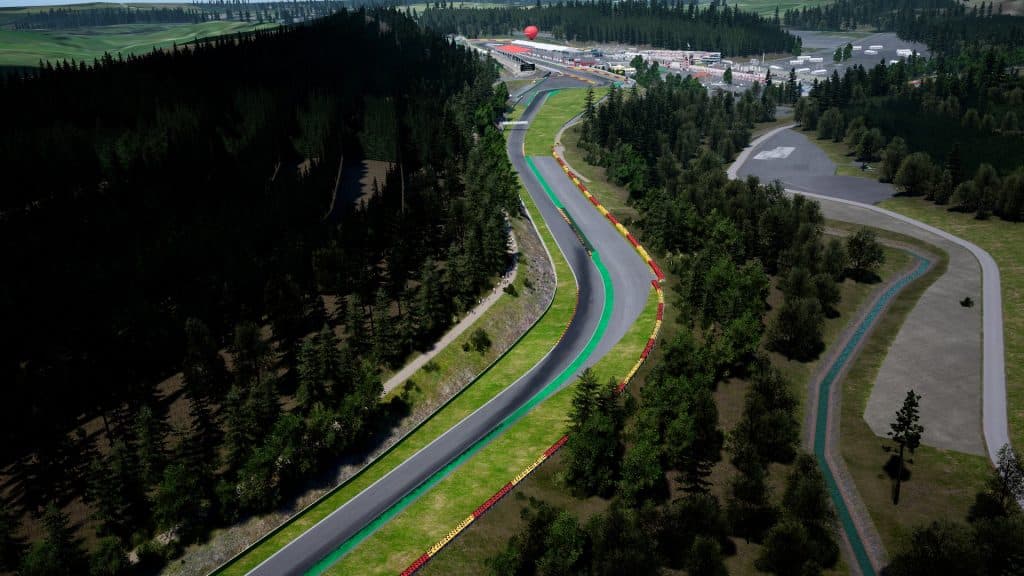
Coming through the kink leading up to Blanchimont, place the car over to the right-hand side of the track. There is some astroturf available on the entry that you can use to open up the corner.
Aim for a late apex and keep your steering smooth and precise to avoid scrubbing off speed. Don’t use the inside curb, rather just come close to it as it unsettles most cars at high speeds. Use as much of the exit as you need, but watch out for those track limits. Getting close to the inside curb without hitting it will ensure track limits aren’t an issue.
Turn 18 and 19 (Bus Stop)
The Bus Stop is a very slow speed right-left chicane and the last two corners to complete a lap at Spa-Francorchamps. It can be very tricky to spot your braking point due to the high speed you reach the corner.
On approach, stay to the left-hand and look out for the solid white line that crosses the circuit under the sponsorship banner. You can brake just after the solid white line, maximizing your braking in a straight line to stop the car as fast as possible. You can also be aggressive with the downshifts to maximize the engine braking.

The first apex is blind, and only reveals itself just as you start to turn in. Stay tight and aim for a late apex for the first part of the chicane while avoiding the sausage curb on the inside. In this sequence, it’s better to sacrifice the entry so that you can focus on getting a good exit out of the second part of the chicane.
By staying more right out of Turn 18, it allows you to open up Turn 19.
Roll off the throttle earlier than you think to get the turn-in for the second part of the chicane. Use the inside curb but again avoid the sausage which can launch the car and cause traction control intervention, which you do not want in the traction zone. Once the car is rotated and you are past the second curb, open up the steering and get on the throttle as fast as you can without breaking traction. Use as much of the exit curb as you need while still keeping in mind the track limits.
This completes a lap at the amazing and highly technical Spa-Francorchamps Grand Prix circuit.

